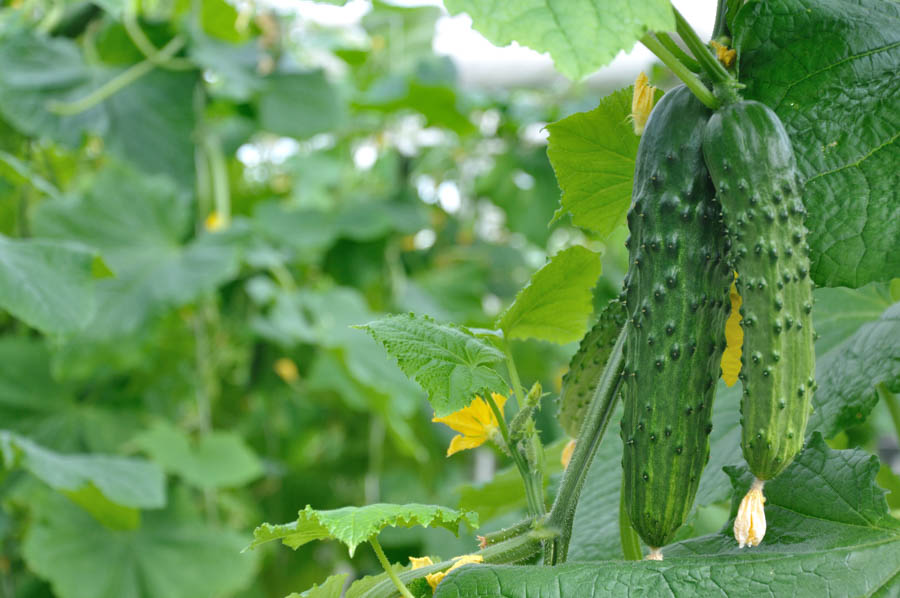Getting to Know Cucumbers Part 2 of 3: Cucumber Characteristics

Getting to Know Cucumbers for Garden and Kitchen
Part 2 of 3: Cucumber Characteristics and Terminology
It’s easy to confuse terminology describing characteristics of cucumbers with actual type or cultivar of cucumber. “Seedless” and “burpless” are not distinct cultivars of cucumber, but describe characteristics that may be found in many different varieties. For example, you may find a seedless English slicer, or a burpless Persian or Japanese type.
Terms for understanding cucumber characteristics:
Burpless varieties are bred to be easier to digest, usually with thinner skins and later formation of seeds.
Greenhouse varieties are bred to be grown in greenhouses, and need equivalent conditions to yield well. They are more commonly grown commercially than in home gardens.
Gynoecious cucumbers produce mostly or entirely female flowers, and therefore they produce more fruits on average per plant. Gynoecious varieties are mixed with standard cucumbers in large or commercial plantings to increase overall yield.
Parthenocarpic varieties have been bred to produce fruits without pollination. Parthenocarpic varieties are usually described as seedless, but not all seedless varieties are parthenocarpic. Parthenocarpic varieties will produce seeds if they are pollinated by standard varieties.
Seedless varieties don’t produce seeds, or they produce seeds later in the process of fruit maturation. Some varieties are called “seedless” simply because they have delayed seed production, while others are parthenocarpic and won’t produce seeds at all if grown apart from standard varieties.
Spineless varieties produce fruits without the small spines or bumps that typical of many pickling cucumbers.
Other articles in this series:
Part 1: Two Basic Cucumber Decisions: Slicers Versus Picklers, and Vining Versus Bush Types
Part 3: A Guide to Cucumber Types